Filters: Collection: "ir_uspace" Year Start: 1953
| Creator | Title | Description | Subject | Date | ||
|---|---|---|---|---|---|---|
| 76 |
 | Kessler, Robert R. | A communication-ordered task graph allocation algorithm | The inherently asynchronous nature of the data flow computation model allows the exploitation of maximum parallelism in program execution. While this computational model holds great promise, several problems must be solved in order to achieve a high degree of program performance. The allocation and ... | Task graph allocation algorithm | 1992 |
| 77 |
 | Evans, John; Kessler, Robert R. | A communication-ordered task graph allocation algorithm | The inherently asynchronous nature of the data flow computation model allows the exploitation of maximum parallelism in program execution?? While this computational model holds great promise several problems must be solved in order to achieve a high degree of program performance?? The allocation... | Data flow computation model | 1992 |
| 78 |
 | Furse, Cynthia M. | A comparative study on two types of transparent patch antennas | Properties of optically transparent patch antennas designed from meshed conductor and transparent conductive films are studied and compared. It is shown that at S band, meshed antenna provides the best antenna efficiency for the highest transparency. It is practical to design a 90% transparent mesh... | 2011 | |
| 79 |
 | McDirmid, Sean; Eide, Eric Norman; Hsieh, Wilson C. | A comparison of Jiazzi and AspectJ for feature-wise decomposition | Feature-wise decomposition is an important approach to building configurable software systems. Although there has been research on the usefulness of particular tools for featurewise decomposition, there are not many informative comparisons on the relative effectiveness of different tools. In this... | Jiazzi; AspectJ; Feature-wise decomposition | 2004-03-23 |
| 80 |
 | Warner, Homer R. | A Comparison of Meta-1 and HELP Terms: Implications for Clinical Data | Biomedical Informatics | 1990 | |
| 81 |
 | Brunvand, Erik L. | A comparison of modular self-timed design styles | State-machine sequencing methods in modular 2-phase and 4-phase asynchronous handshake control are compared. Design styles are discussed, and the sequencers are tested against each other using a medium-scale minicomputer test design implemented in FPGAs. Seven 4-phase sequencers are tested. In these... | Self-timed; State-machine sequencing; Asynchronous handshake control | 1995 |
| 82 |
 | Zhang, Lixin | A comparison of online superpage promotion mechanisms | The amount of data that a typical translation lookaside buffer (TLB) can map has not kept pace with the growth in cache sizes and application footprints. As a result, the cost of handling TLB misses limits the performance of an increasing number of applications. The use of superpages, multiple adjac... | Superpages; Translation lookaside buffer; TLB | 1999 |
| 83 |
 | Brunvand, Erik L.; Smith, Kent F. | A comparison of self-timed design using FPGA, CMOS, and GaAs technologies | Asynchronous or self-timed systems that do not rely on U global clock to keep system components synchronized can offer significant advantages over traditional clocked circuits in a variety of applications. One advantage is that because of the separation of timing, from, functionality in these sys... | 1992 | |
| 84 |
 | Carter, John B. | A comparison of software and hardware synchronization mechanisms for distributed shared memory multiprocessors | Efficient synchronization is an essential component of parallel computing. The designers of traditional multiprocessors have included hardware support only for simple operations such as compare-and-swap and load-linked/store-conditional, while high level synchronization primitives such as locks, bar... | Hardware locks | 1996 |
| 85 |
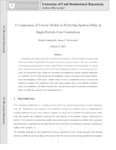 | Sutherland, James Clayton | A comparison of various models in predicting ignition delay in single-particle coal combustion | In this paper, individual coal particle combustion under laminar conditions is simulated using models with various levels of complexity for the particle and gas phase chemical kinetics. The mass, momentum and energy governing equations are fully coupled between the particle and the gas phase. In the... | 2014-01-01 | |
| 86 |
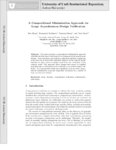 | Myers, Chris J. | A compositional minimization approach for large asynchronous design verification | This paper presents a compositional minimization approach with efficient state space reductions for verifying non-trivial asynchronous designs. These reductions can result in a reduced model that contains the exact same set of observably equivalent behavior in the original model, therefore no false ... | 2012-01-01 | |
| 87 |
 | Gopalakrishnan, Ganesh | A compositional model for synchronous VLSI systems | Currently available hardware specification languages have two serious deficiencies: (i) inadequate protocol definition capabilities; (ii) lack of a compositional model. We now explain these in more detail. | Very large scale integration; VLSI systems | 1987 |
| 88 |
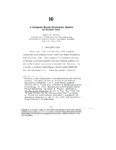 | Warner, Homer R. | A Computer Based Information System for Patient Care | Biomedical Informatics | 1972 | |
| 89 |
 | Durney, Carl H. | A computer graphics method for solving transcendental equations | There are a number of ways to determine the values of x which satisfy the equation F(x)=0. (The case of interest here is that in which F i s a complex function of the complex variable x.) One way is to search for values of x which make Real (F(x)) and Imaginary (F(x)) both zero at the same time wher... | Transcendental equations | 1970 |
| 90 |
 | Pryor, T. Allan | A Computer Program for Stress Test Data Processing | Biomedical Informatics | 1974 | |
| 91 |
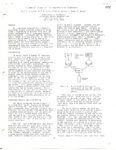 | Warner, Homer R. | A Computer System for the Cardiovascular Laboratory | Biomedical Informatics | 1974 | |
| 92 |
 | Warner, Homer R. | A Computer-Based Diagnostic Model for Individual Case Review | Biomedical Informatics | 1995 | |
| 93 |
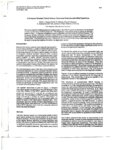 | Warner, Homer R. | A Computer-Directed Patient History: Functional Overview and Initial Experience | Biomedical Informatics | 1986 | |
| 94 |
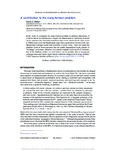 | Mattis, Daniel C. | A contribution to the many-fermion problem | In this work we reexamine the many-fermion problem in arbitrary dimensions. It is shown that in two dimensions or higher, the Hamiltonian of interacting fermions can be separated into individual nonintersecting sectors labeled by the wave-vector q. Within each sector the Hamiltonian maps onto a gene... | 2012-01-01 | |
| 95 |
 | Henderson, Thomas C. | A control paradigm for general purpose manipulation systems | Mechanical end effectors capable of dextrous manipulation are now a reality. Solutions to the high level control issues, however, have so far proved difficult to formulate. We propose a methodology for control which produces the functionality required for a general purpose manipulation system. It is... | Manipulation systems | 1987 |
| 96 |
 | Brunvand, Erik L. | A correctness criterion for asynchronous circuit validation and optimization | In order to reason about the correctness of asynchronous circuit implementations and specifications, Dill has developed a variant of trace theory [1]. Trace theory describes the behavior of an asynchronous circuit by representing its possible executions as strings called "traces" A useful relatio... | Asynchronous circuits; Circuit optimizations; Formal verification of hardware; Trace theory; Asynchronous circuit validation | 1992 |
| 97 |
 | Gopalakrishnan, Ganesh | A correctness criterion for asynchronous circuit validation and optimization | We propose a new relation C. called strong conformance in the context of Dill's trace theory, and define B Q A to be true exactly when B conforms to A and the success set of B contains the success set of A. When B C. A, module B operated in module A's maximal environment AM (i.e. B || AM) exhibits a... | Validation; Optimization | 1992 |
| 98 |
 | Roundy, Shadrach J. | A cost-effective planar electromagnetic energy harvesting transducer | This paper presents a planar multi-pole electromagnetic energy harvesting transducer. We report on the design, manufacture, and performance results of integrated devices based on this transducer. The transducer leverages recent advancements in the manufacture of multi-pole magnets and can be impleme... | 2012-01-01 | |
| 99 |
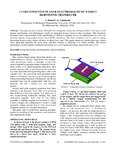 | Roundy, Shad | A Cost-effective Planar Electromagnetic Energy Harvesting Transducer Technical Digest PowerMEMS 2012 (Atlanta, GA USA 2-5 December 2012) | 2012-12-05 | ||
| 100 |
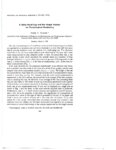 | Warner, Homer R. | A Data-Trend Log and Bar Graph Dispaly for Physiological Monitoring | Biomedical Informatics | 1970 |
